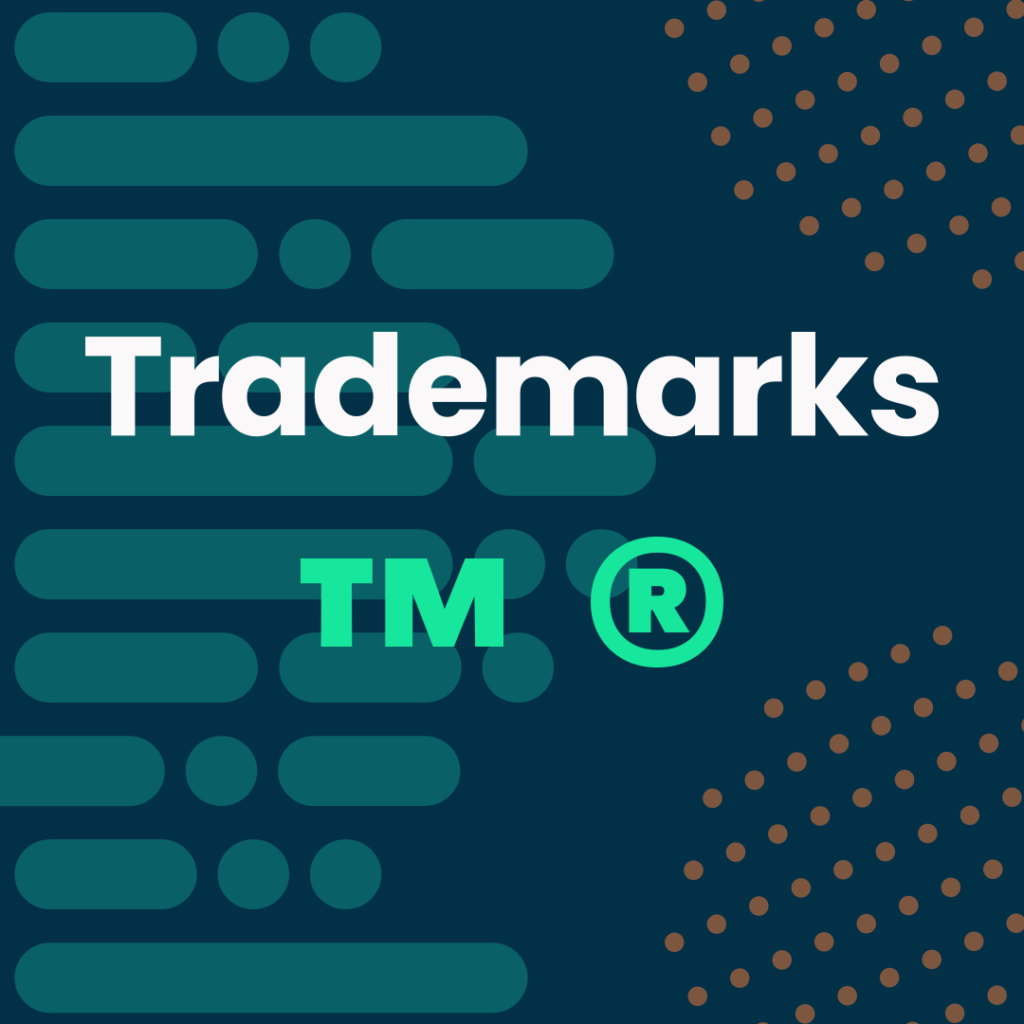We are not lawyers and do not represent the following as legal advice. The following are suggestions based on our experience trademarking our own brand, combined with common patterns we have noticed among startups and new product ideas over the years.
If you are starting out with your new product, you have probably spent some of your time thinking about the best ways to protect it from being swept out from under you by a competitor or anyone else. Often founders will require an NDA before they feel comfortable discussing details of their idea with us as potential development partners, but eventually to launch and bring your idea into the world, you will have to make it public. How do you protect it then? Today we will discuss trademarking your logo or brand mark to help protect the value of your marketing efforts and the good will you may generate around your product and brand when you launch.
Source code falls into an interesting and somewhat new realm of intellectual property. Unlike machines or physical inventions, code and software isn’t a tangible good in the same way, even though it may create a usable product when executed. Your written source code is actually a literary work and is protectable under existing copyright law and precedent. However, two very different styles and implementations of source code can produce the same functional result, so copyright may not be enough.
Is your idea patentable? Possibly. That depends on a number of complex questions and must meet certain thresholds such as being, “non-obvious to a person having ordinary skill in the art” (a PHOSITA)—meaning if someone with basic understanding of the subject matter involved and complete background information could have clearly concluded to create your claimed invention—it’s probably not patentable. There are other requirements and nuances to patentability but the short of it is that most of the ideas we have seen founders come to us with do not have a clearly patentable claim at the core of their value proposition. So, how do you protect your idea?
There is no perfect answer, but at minimum you can protect your brand identity. Personally, we think that going through the process of filing a trademark to protect your brand and the good will you create through it is one of the best values for the money and effort. It costs roughly $250-$350 depending on the class of application you are filing, and if you are granted your trademark, it gives you the legal grounds to police and prevent any other party from using your trademarked brand/logo/etc. to compete with you, OR, file a trademark on a similar brand offering related services such that could be confusing to people trying to identify your product or service from another. This last part is why we feel it is important to file your trademark as early as you reasonably can.
Trademarks are evaluated and issued by the United States Patent and Trademark Office (USPTO). When they examine your application and decide if you can be granted the trademark, they will look to see if your desired mark could easily cause confusion with any existing marks that offer related goods or services. This means that if you don’t trademark your assets, even if someone doesn’t blatantly steal your logo or other brand asset, they could see your brand’s growing popularity and trademark a name or logo close enough to yours for related goods and services that they can effectively prevent you from being granted a trademark on the brand you have spent your time, effort, and money growing.
When you file, you should be prepared to demonstrate your active use or intent to use the trademark you are requesting. If you sell goods, you should be prepared to show them how you use the mark in labeling and branding, for example. If you sell services, you should be prepared to furnish marketing materials or advertisements for your service(s) which feature your requested trademark: this could be your company or product website.
TM vs R: You have probably seen both TM and R next to various logos or logo marks when looking at products or packaging. The former, TM, denotes that the party in question is using the associated mark as a trademark, but it is not an indicator that it is a registered mark with the USPTO. Anyone could use this to indicate a mark is intended as a trademark, and in short, it has no legal meaning. The R symbol actually stands for registered trademark, which indicates the party using it has registered their mark with the USPTO and has legal, enforceable claims to it.
Where do I start? The United States Patent and Trademark Office (USPTO) has a series of informational videos they call the “Trademark Information Network” that, while a bit theatrical, offer concise and helpful pointers if you wish to file or learn about filing trademarks for yourself. You can always have a licensed attorney complete this filing process for you, in which case we would recommend using an attorney who is familiar with the trademarking process and familiar with conducting searches for potential conflicts in advance of their filing. Whichever route you choose, we recommend watching at least their first two videos: “USPTO and trademark basics”, as well as “Before you file” to get a baseline understanding of the most important components and considerations for protecting your mark.
Suggested videos from the USPTO:




